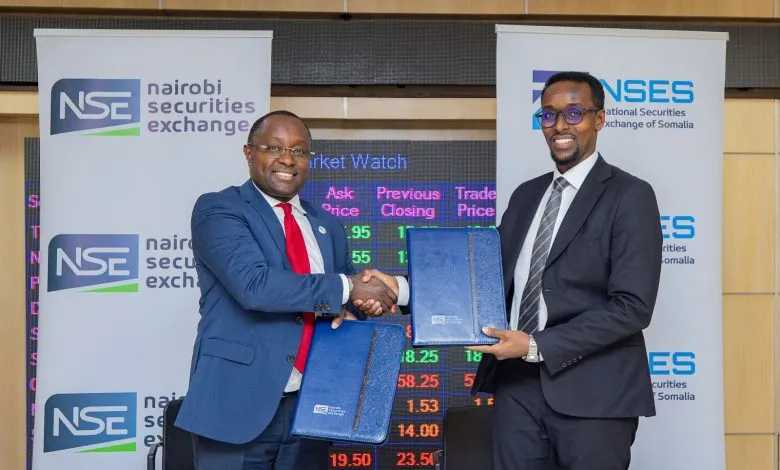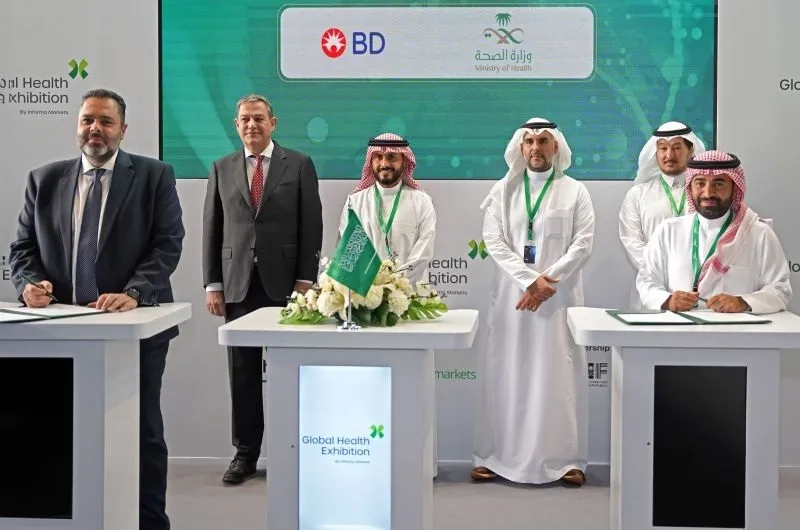Knight Frank Kenya, a leading global property consultancy with extensive operations throughout East Africa, has released its comprehensive Kenya Market Update for the first half of 2025, providing detailed analysis of the country’s real estate performance and broader economic dynamics. The report reveals encouraging resilience across multiple key sectors including office space, hospitality, residential property, and capital markets, even as the nation navigates evolving macroeconomic challenges and adjusts to shifting global economic conditions.
The property consultancy’s findings paint a picture of measured optimism, with strategic infrastructure investments, stabilizing macroeconomic fundamentals, and targeted sectoral growth combining to support Kenya’s real estate market expansion despite headwinds including elevated interest rates, currency volatility concerns, and global economic uncertainty that have affected emerging markets worldwide.
Push boundaries, reach goals, achieve more. Whether it’s ACCA, HESI A2, ATI TEAS 7, HESI EXIT, NCLEX-RN, NCLEX-PN, or Financial Literacy, we’ve got the Online course to match your ambition. Start with Serrari Ed now.
Macroeconomic Foundations and Capital Market Dynamics
Kenya’s broader economic performance provides the essential foundation for real estate sector activity, and the Knight Frank report documents steady progress across key indicators. The nation’s Gross Domestic Product expanded by 4.7% during 2024, representing solid growth that exceeded many peer African economies while falling slightly short of Kenya’s historical high-growth periods. Looking forward, economic projections anticipate GDP expansion of approximately 4.5% throughout 2025, signaling continued recovery momentum despite persistent global headwinds including geopolitical tensions, commodity price volatility, and tightening global financial conditions.
This growth trajectory, while more modest than the 6-7% rates Kenya achieved during peak years of the previous decade, represents sustainable expansion that supports employment generation, household income growth, and business investment—all critical drivers of real estate demand across residential, commercial, and industrial segments. The slightly reduced growth projections for 2025 compared to 2024 reflect realistic assessments of constraint factors including fiscal consolidation pressures, elevated debt servicing costs, and the lagged effects of previous monetary tightening on private sector credit growth.
Inflation performance has remained encouragingly stable, consistently staying within the Central Bank of Kenya’s official target range of 2.5% to 7.5%. This price stability represents a significant achievement given global inflationary pressures that have affected many economies, and it reflects effective monetary policy management by the CBK alongside beneficial commodity price trends and improved agricultural production following favorable weather patterns. Stable inflation protects real estate investors by preserving purchasing power, supports mortgage market functionality by enabling reasonable interest rate setting, and facilitates long-term planning by both developers and occupiers.
Currency stability has also improved markedly, with the Kenyan shilling stabilizing against the US dollar after experiencing significant volatility during early 2025. This stabilization followed a period of depreciation pressure driven by global dollar strength, Kenya’s current account deficit, and debt servicing requirements. The subsequent stabilization reflects multiple factors including improved foreign exchange inflows from tourism and remittances, successful sovereign bond issuances that replenished reserves, and CBK interventions to smooth excessive volatility. For real estate markets, currency stability is particularly important for cross-border investors, developers relying on imported materials or equipment, and the hospitality sector serving international clientele.
Capital Markets Evolution and Investment Instruments
Within Kenya’s capital markets, the performance of Real Estate Investment Trusts (REITs) presents a mixed picture requiring nuanced interpretation. Interest in REITs remained relatively subdued during the first half of 2025, with prices holding steady but trading volumes remaining limited. This muted activity continues a pattern that has characterized Kenya’s REIT market since its establishment, despite the theoretical attractions of REITs as vehicles for democratizing real estate investment and providing liquidity to traditionally illiquid property assets.
The limited REIT market activity reflects several factors: insufficient investor awareness and understanding of REIT structures and benefits, limited number of listed REITs providing insufficient choice and scale, concerns about REIT management quality and governance in some instances, relatively attractive yields available in fixed income instruments that compete for investor capital, and structural issues including minimum investment requirements that may exclude smaller investors despite the instruments’ intended accessibility.
However, investor attention has gradually shifted toward alternative investment options, particularly asset-backed securities that provide exposure to specific infrastructure projects or property developments while offering defined cash flow profiles and security structures. This evolution suggests growing sophistication among Kenyan investors seeking real estate exposure beyond direct property ownership, though the market remains far from reaching its potential depth and breadth.
Charles Macharia, Senior Research Analyst at Knight Frank Kenya, offered perspective on capital market dynamics: “Kenya’s capital markets reflect cautious optimism, with the success of instruments like the Talanta Stadium bond highlighting growing confidence in infrastructure-linked investments. Meanwhile, the REITs market continues to show untapped potential, maintaining stable prices amid limited activity.”
The reference to the Talanta Stadium bond is particularly noteworthy, as this infrastructure bond attracted strong retail investor participation and demonstrated public appetite for well-structured, transparently managed infrastructure investments linked to tangible projects with clear economic and social benefits. The bond’s success suggests that market development strategies emphasizing investor education, transparent governance, and linking investments to visible projects can overcome skepticism and mobilize domestic capital for development purposes.
Infrastructure Sector Surge and Public Investment
Kenya’s infrastructure sector experienced particularly significant momentum during the first half of 2025, with the national government allocating an impressive KSh 217.3 billion specifically for road development—representing a substantial 12.3% increase compared to 2024 allocation levels. This increased investment reflects government prioritization of infrastructure as an economic enabler, recognition that Kenya’s infrastructure deficit constrains growth potential, and strategic focus on connectivity improvements that can stimulate regional development and enhance national competitiveness.
Road infrastructure investment delivers multiple benefits extending far beyond the immediate construction activity: improved connectivity reduces transportation costs for businesses and households, enhanced road quality decreases vehicle operating costs and improves safety, strategic corridor development opens previously marginalized areas to economic participation, and construction activity itself generates substantial employment and demand for local materials and services.
For real estate markets specifically, infrastructure investment creates direct and indirect value. Properties along improved transport corridors experience appreciation as accessibility improves and travel times decrease. New infrastructure opens greenfield areas to development that were previously too remote or poorly connected to attract investment. Infrastructure improvements support higher-density development by enabling the transportation systems required for concentrated urban populations.
Public-Private Partnership Momentum
The Knight Frank report highlights accelerating momentum in Public-Private Partnerships (PPPs), with 33 projects now identified within the government’s PPP pipeline—8 actively under implementation and 25 in various stages of planning, feasibility assessment, or procurement. This PPP activity represents a significant evolution in Kenya’s infrastructure delivery approach, moving beyond sole reliance on direct government funding toward models that leverage private sector capital, technical expertise, and operational efficiency while allocating risks to parties best positioned to manage them.
Key projects advancing through PPP structures include the EU-backed Kwa Jomvu-Mariakani highway, a critical corridor connecting Mombasa to interior regions that has secured a Euro 19 billion loan facility from European development finance institutions. This project will enhance freight movement from Mombasa Port to inland destinations, reducing logistics costs that currently disadvantage Kenyan manufacturers and exporters while also improving passenger transportation along a heavily trafficked route.
The Nairobi River Regeneration Project, valued at KSh 50 billion, represents an ambitious urban transformation initiative combining environmental restoration, informal settlement upgrading, and public space creation along Nairobi’s rivers. This project addresses multiple challenges simultaneously: environmental degradation from pollution and encroachment, flooding risks affecting riverside communities, inadequate housing and services in informal settlements, and deficit of quality public space in the capital. Successful implementation would demonstrate transformative potential of integrated urban development projects.
Additional major infrastructure initiatives highlighted in the report include dualling of the Northern Bypass, a critical orbital route around Nairobi that will enhance freight movement and reduce congestion in the capital, and continued development of the Dongo Kundu Special Economic Zone near Mombasa, which aims to attract export-oriented manufacturing investment through infrastructure provision, streamlined regulations, and fiscal incentives. These projects collectively enhance Kenya’s economic infrastructure foundation and create conditions supporting sustained real estate market growth.
Build the future you deserve. Get started with our top-tier Online courses: ACCA, HESI A2, ATI TEAS 7, HESI EXIT, NCLEX-RN, NCLEX-PN, and Financial Literacy. Let Serrari Ed guide your path to success. Enroll today.
Office Market Performance and Quality Migration
Kenya’s office market demonstrated encouraging performance during the first half of 2025, with prime office occupancy rates rising to 77.7%—a level indicating healthy market conditions where sufficient vacancy exists to provide tenant choice while avoiding the oversupply that depresses rents and returns. This occupancy improvement was driven primarily by strong uptake in Grade A developments offering modern specifications, superior amenities, and sustainability features increasingly demanded by sophisticated tenants.
Specific developments experiencing robust leasing activity included The Cube, a landmark Grade A office tower in Nairobi’s Upper Hill district offering premium specifications and amenities; Eneo at Tatu City, a mixed-use satellite development north of Nairobi attracting tenants seeking modern space outside the traditional CBD; and Purple Tower, another Upper Hill development capturing tenant migration to premium stock. These successful developments share common characteristics: modern design and specifications, strong ESG credentials including energy efficiency and wellness features, professional management, and good accessibility.
The flexible workspace sector demonstrated particular dynamism, with operators like KOFISI and IWG (Regus, Spaces brands) expanding their Kenyan footprints through new locations and enlarged existing facilities. Flexible workspace growth reflects multiple trends: increasing acceptance of alternative workspace models beyond traditional leases, corporate real estate strategies emphasizing flexibility and reducing fixed commitments, startup and small business growth creating demand for turnkey space with short-term commitments, and the normalization of hybrid work models following COVID-19 disruptions.
Business Process Outsourcing (BPO) firms also reinforced their presence in Nairobi’s office market, consolidating the capital’s position as East Africa’s leading BPO hub. BPO sector growth reflects Kenya’s favorable attributes including English language proficiency, relatively educated workforce, improving digital infrastructure, and time zone positioning enabling service provision to European and American markets. Major BPO operators typically occupy substantial office space with specific technical requirements, making them valued tenants for landlords able to meet their needs.
However, Grade B office buildings—older properties with basic specifications and limited amenities—faced more challenging market conditions due to oversupply in this segment and shifting tenant preferences toward higher-quality space. As Grade A supply has increased and pricing has become more competitive, many tenants previously occupying Grade B space have upgraded, leaving secondary stock with elevated vacancies and downward rent pressure.
Mark Dunford, CEO of Knight Frank Kenya, emphasized this market bifurcation: “The flight to quality is undeniable. Prime office spaces with ESG credentials and modern amenities continue to attract tenants, while secondary stock struggles. Landlords must prioritize adaptability to remain competitive in this tenant-favoring market.”
This “flight to quality” phenomenon reflects global office market trends where sustainability, wellness, technology enablement, and amenity-rich environments increasingly drive tenant location decisions. Landlords of older buildings face strategic choices: invest in substantial refurbishment to meet contemporary standards, reposition properties for alternative uses better suited to their attributes, or accept lower-tier market positioning with corresponding rental levels.
Residential Market Stability and High-End Strength
Kenya’s prime residential market demonstrated stable growth dynamics during the first half of 2025, with sales prices increasing by 5.63% year-on-year—a rate indicating healthy appreciation without the excessive escalation that creates affordability crises or bubble concerns. This measured price growth reflects balanced supply-demand dynamics in the prime segment, continued interest from high-net-worth buyers, and the sector’s relative insulation from macroeconomic pressures affecting middle and lower-income housing markets.
Rental markets in the prime residential segment showed even stronger performance, with prime residential rents growing by 7.96% year-on-year. This robust rental growth exceeds sales price appreciation, suggesting strong underlying demand and tight supply conditions in the prime rental market. The rental market strength partly reflects changing preferences among some high-income households favoring rental flexibility over ownership commitments, expatriate demand concentrated in the rental market, and investment property owners able to command premium rents for well-located, well-maintained properties.
Demand in the prime residential segment is substantially supported by high-net-worth individuals and expatriates, particularly for well-priced properties in established prime locations including Karen, Muthaiga, Runda, Kitisuru, and Lavington. These areas offer combination of security, infrastructure quality, proximity to international schools and amenities, and social prestige that commands premium pricing.
Development activity data provides insights into residential market expectations, with approved building plans for residential developments accounting for 77% of total construction approvals during the period, valued at KSh 54.2 billion. This substantial residential development pipeline suggests developer confidence in market absorption capacity and expectations of continued demand growth. However, the critical question remains whether this development activity appropriately targets the affordable and middle-income segments where Kenya’s housing deficit is most acute, or concentrates excessively in the already well-served prime market.
Hospitality Sector Expansion and International Investment
Kenya’s hospitality sector demonstrated encouraging momentum during early 2025, with international tourist arrivals increasing by 3.5%—modest growth that nonetheless represents positive trajectory for a sector that remains critical to Kenya’s economy, foreign exchange generation, and employment provision. Kenya’s ranking as Africa’s fourth-best tourism destination according to international assessments reflects the country’s diverse attractions including world-renowned wildlife, coastal beaches, cultural heritage, and conference facilities.
The sector attracted landmark investments from major international hospitality brands expanding or entering the Kenyan market. Marriott International, one of the world’s largest hotel companies, announced plans for luxury tented camps in the Masai Mara, Kenya’s most famous wildlife reserve. These developments reflect growing demand for high-end, experiential safari accommodation that provides luxury amenities while maintaining authentic bush experience and environmental sensitivity.
Radisson Hotel Group announced a KSh 4.3 billion expansion in Nairobi, demonstrating confidence in Kenya’s capital as a business and leisure destination. This investment expands room inventory in the upscale segment serving both business travelers and leisure tourists seeking quality accommodation in Nairobi as a base for exploring Kenya’s attractions.
Beyond traditional hotels, serviced apartments gained significant traction, catering to evolving travel patterns blending work and leisure—often termed “bleisure” travel. Serviced apartments provide residential-style accommodation with hotel amenities, appealing to extended-stay business travelers, digital nomads, and families seeking more space and flexibility than traditional hotel rooms provide. This segment’s growth reflects broader hospitality industry evolution toward diverse accommodation types serving varied guest preferences and trip purposes.
Mark Dunford emphasized the sector’s evolution: “Kenya’s hospitality sector is redefining luxury through eco-conscious developments and experiential offerings. With major international brands looking to either increase their footprint or enter the market, the country is solidifying its status as one of Africa’s premier tourism and MICE destination.”
The reference to MICE (Meetings, Incentives, Conferences, and Exhibitions) highlights Kenya’s growing importance as a business events destination, leveraging Nairobi’s regional hub status, improving conference infrastructure, and government support for attracting international conferences that generate substantial economic impact while raising Kenya’s global profile.
Sustainability and ESG Integration
Throughout the Knight Frank report, environmental, social, and governance (ESG) considerations emerge as increasingly central to real estate market dynamics. The office market’s flight to quality emphasizes properties with strong ESG credentials including energy efficiency, water conservation, wellness features, and sustainable operations. The hospitality sector’s emphasis on eco-conscious developments reflects both regulatory requirements and guest preferences for sustainable tourism.
This ESG integration reflects multiple drivers: growing regulatory requirements including building codes emphasizing efficiency, corporate tenants’ sustainability commitments requiring compliant facilities, investor expectations increasingly incorporating ESG into decision frameworks, and end-user preferences—whether office workers, hotel guests, or residents—valuing sustainable, healthy environments.
For Kenya specifically, ESG considerations align with national priorities including climate adaptation, resource efficiency amid infrastructure constraints, and positioning as a responsible destination for international investment. Developers and landlords incorporating strong ESG features increasingly gain competitive advantages in attracting tenants, securing financing, and achieving premium valuations.
Conclusion: Balanced Growth Amid Challenges
Knight Frank’s H1 2025 Kenya Market Update reveals a real estate sector demonstrating resilience and selective strength despite operating within a challenging macroeconomic environment. The 5.6% sector growth, while modest by historical standards, represents sustainable expansion supported by strategic infrastructure investment, stabilizing economic fundamentals, and continued demand across key segments.
The government’s substantial KSh 217.3 billion infrastructure allocation, combined with advancing PPP projects, creates foundations for sustained real estate market development by improving connectivity, opening new areas to development, and enhancing Kenya’s overall competitiveness. The office market’s bifurcation between thriving Grade A space and struggling Grade B properties reflects global quality migration trends while creating both challenges and opportunities for different market participants.
Residential market stability in the prime segment, combined with robust rental growth, demonstrates continued strength in the upper market tier, though questions remain about whether development activity adequately addresses Kenya’s affordable housing deficit. The hospitality sector’s international brand investments and innovative product offerings position Kenya to capture growing tourism demand while diversifying beyond traditional safari tourism.
Looking forward, Kenya’s real estate sector’s trajectory will depend on sustaining macroeconomic stability, maintaining infrastructure investment momentum, enhancing affordability in middle and lower-income segments, and continuing ESG integration that aligns with global best practices while addressing local priorities. The fundamentals documented in Knight Frank’s analysis suggest cautious optimism is warranted, provided stakeholders navigate challenges effectively while capitalizing on Kenya’s substantial inherent strengths as East Africa’s leading economy and regional hub.
Ready to take your career to the next level? Join our Online courses: ACCA, HESI A2, ATI TEAS 7 , HESI EXIT , NCLEX – RN and NCLEX – PN, Financial Literacy!🌟 Dive into a world of opportunities and empower yourself for success. Explore more at Serrari Ed and start your exciting journey today! ✨
Track GDP, Inflation and Central Bank rates for top African markets with Serrari’s comparator tool.
See today’s Treasury bonds and Money market funds movement across financial service providers in Kenya, using Serrari’s comparator tools.
Photo source: Google
By: Montel Kamau
Serrari Financial Analyst
7th October, 2025
Article, Financial and News Disclaimer
The Value of a Financial Advisor
While this article offers valuable insights, it is essential to recognize that personal finance can be highly complex and unique to each individual. A financial advisor provides professional expertise and personalized guidance to help you make well-informed decisions tailored to your specific circumstances and goals.
Beyond offering knowledge, a financial advisor serves as a trusted partner to help you stay disciplined, avoid common pitfalls, and remain focused on your long-term objectives. Their perspective and experience can complement your own efforts, enhancing your financial well-being and ensuring a more confident approach to managing your finances.
Disclaimer: This article is for informational purposes only and does not constitute financial advice. Readers are encouraged to consult a licensed financial advisor to obtain guidance specific to their financial situation.
Article and News Disclaimer
The information provided on www.serrarigroup.com is for general informational purposes only. While we strive to keep the information up to date and accurate, we make no representations or warranties of any kind, express or implied, about the completeness, accuracy, reliability, suitability, or availability with respect to the website or the information, products, services, or related graphics contained on the website for any purpose. Any reliance you place on such information is therefore strictly at your own risk.
www.serrarigroup.com is not responsible for any errors or omissions, or for the results obtained from the use of this information. All information on the website is provided on an as-is basis, with no guarantee of completeness, accuracy, timeliness, or of the results obtained from the use of this information, and without warranty of any kind, express or implied, including but not limited to warranties of performance, merchantability, and fitness for a particular purpose.
In no event will www.serrarigroup.com be liable to you or anyone else for any decision made or action taken in reliance on the information provided on the website or for any consequential, special, or similar damages, even if advised of the possibility of such damages.
The articles, news, and information presented on www.serrarigroup.com reflect the opinions of the respective authors and contributors and do not necessarily represent the views of the website or its management. Any views or opinions expressed are solely those of the individual authors and do not represent the website's views or opinions as a whole.
The content on www.serrarigroup.com may include links to external websites, which are provided for convenience and informational purposes only. We have no control over the nature, content, and availability of those sites. The inclusion of any links does not necessarily imply a recommendation or endorsement of the views expressed within them.
Every effort is made to keep the website up and running smoothly. However, www.serrarigroup.com takes no responsibility for, and will not be liable for, the website being temporarily unavailable due to technical issues beyond our control.
Please note that laws, regulations, and information can change rapidly, and we advise you to conduct further research and seek professional advice when necessary.
By using www.serrarigroup.com, you agree to this disclaimer and its terms. If you do not agree with this disclaimer, please do not use the website.
www.serrarigroup.com, reserves the right to update, modify, or remove any part of this disclaimer without prior notice. It is your responsibility to review this disclaimer periodically for changes.
Serrari Group 2025












